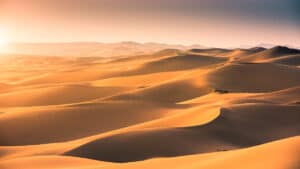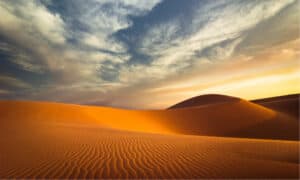Full to the brim with amusement, adventure, music, and art, the Burning Man festival is an iconic event that is cherished by many. The festival revolves around the idea of the expression of identity and cultural freedom, and it takes place out in the open wilderness.
Year after year, people flock to the festival to get a once-in-a-lifetime experience. In addition to the daily events, most people also enjoy camping out during the night, as they can stargaze in one of the most vast and open places.
The desert in which the event takes place may seem like a fairly desolate place but don’t judge a book by its cover. There are plenty of animals that go bump in the night, so to speak, near the festival grounds.
Today, we will take a look at some basic desert ecology, and some amazing animals lurking in Burning Man’s Black Rock Desert.
An Overview of the Black Rock Desert
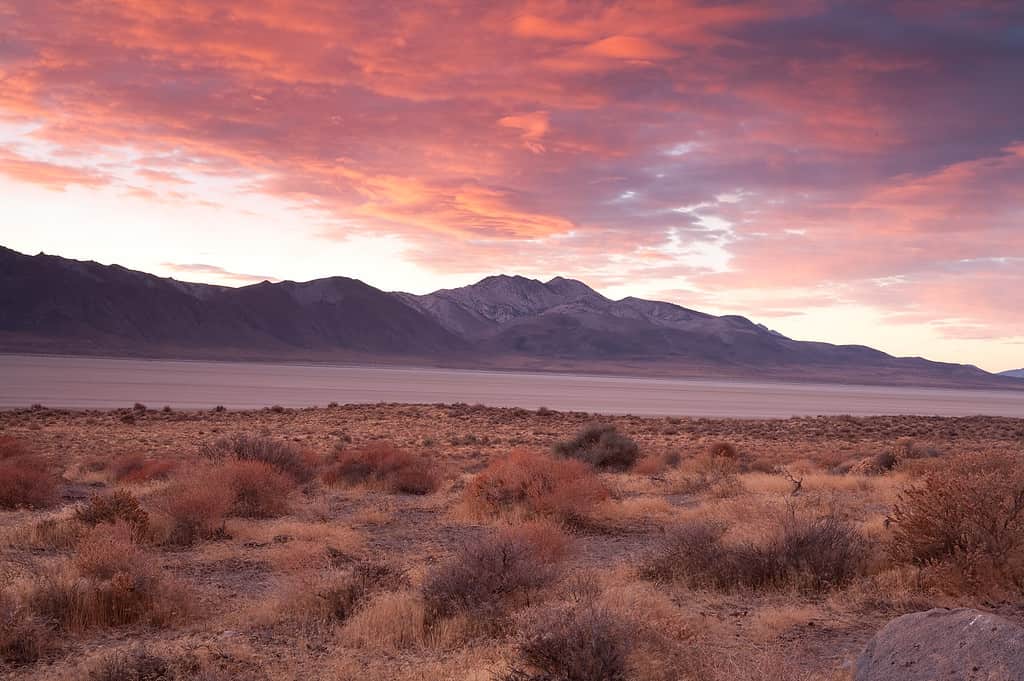
The Black Rock Desert has some varied terrain, including flat patches of dry land adjacent to large sloping hills.
Every year, the iconic art festival takes place in the Black Rock Desert in Nevada. Specifically, it takes place in Black Rock City, which is a township that is erected directly before the festival. After the festival, the town isn’t recognized or used until the following year, when it is revived again for the next festival.
The desert is specifically located in the Northwest portion of Nevada. The festival takes place on an ancient lake bed in the desert, known as a playa. Furthermore, the desert itself is dotted with numerous lava beds and alkali planes, making it a gorgeous spot for visiting and sightseeing.
The Climate of the Black Rock Desert
In addition to the notable geological features of the desert, it also has a very unique and extreme climate. As you can imagine, the desert is typically hot, dry, and relatively barren for most of the year. It can otherwise be described as an arid landscape, having fairly little vegetation that is supported by a mostly hot and dry environment.
Don’t expect to see too much water if you attend Burning Man, as the average yearly rainfall is around 6.5 inches a year, which is staggeringly low, even when compared to other relatively dry areas!
Like most other deserts, the Black Rock Desert can reach incredibly high temperatures during the day. Record highs have been recorded at upwards of around 100-110 degrees Fahrenheit. Even more shocking, the temperatures also drop drastically at night, and can reach lows of around 45 degrees Fahrenheit!
There are rare occasions when the desert does experience some rain, especially if there are any extreme storms that roll through. During very intense storm seasons, water can collect in the playa to form a mini-lake, although it is short-lived. Depending on the timing of rain, water can actually cause some issues for the desert being used in the Burning Man festival.
Plants in the Black Rock Desert
To support the animals that live in the desert, some sparse plants make up the base of the food chain.
Typically, wildflowers dominate the flora of the desert. They are the most common and abundant plants, usually able to bloom for the majority of the year. Wildflowers are great supporters of ecosystems, as they can provide nectar for pollinators, vegetation for herbivores, and seeds for birds and other small animals.
Some common wildflowers that grow in the Black Rock Desert include:
- Yellow Buckwheat
- White Bitterroot
- Blue Lupine
- Yellow Daises
- Indian Paintbrush
On top of wildflowers, some larger plants grow, although they don’t boast as beautiful of flowers! Bushes such as salt scrubs and sage brushes are extremely common. There are usually some differences in vegetation based on elevation, but usually, there is some type of grass or bush throughout the entire desert. Some common grasses and shrubs in the Black Rock Desert include:
- Budsage
- Shadscale
- Arrowleaf Balsamroot
- Bitterbrush
- Mountain Big Sagebrush
- Rabbit Brush
- Snowberry
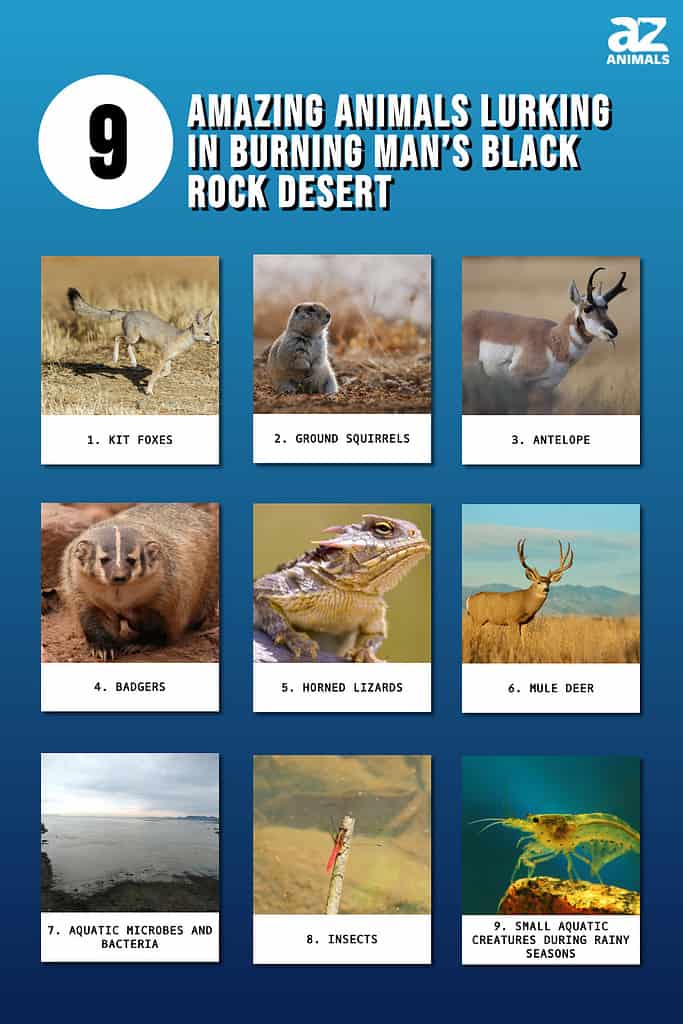
What Animals Live in the Black Rock Desert?
While it may not have as many animals as other abundant biomes such as forests and grasslands, deserts still can support a variety of wildlife. Lots of the wildlife in the desert can be fairly dangerous, as they have adapted traits that allow them to survive in such a desolate and unforgiving habitat.
Without further ado, let’s take a look at some of the most common animals that you may run into in the Black Rock Desert.
1. Kit Foxes
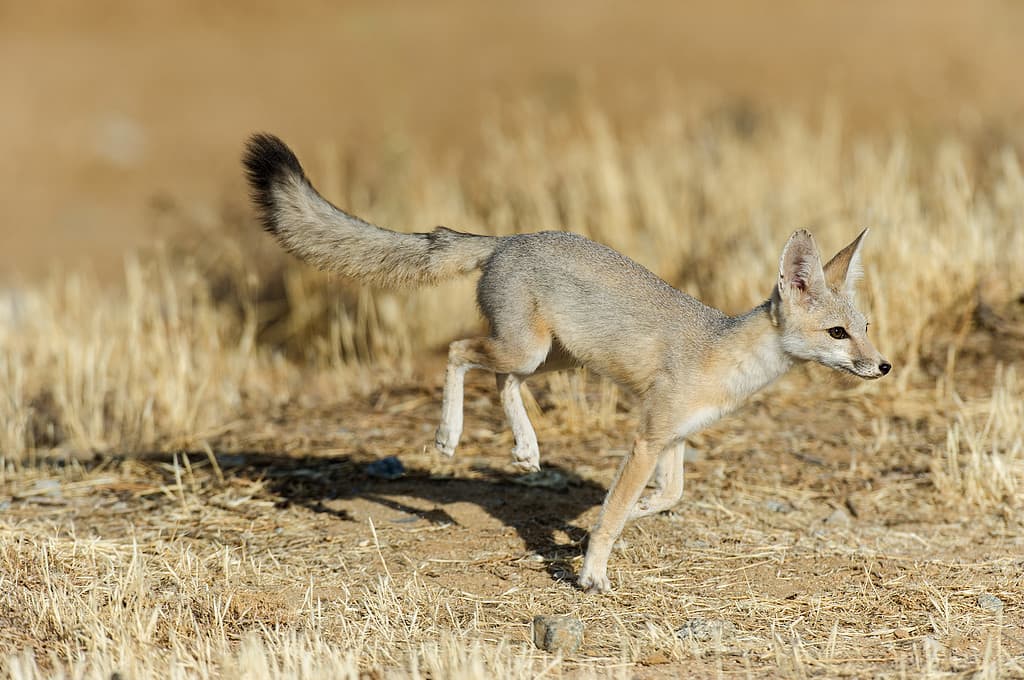
Although they are adept predators, kit foxes also have incredibly camouflaged fur. This allows them to both hide from attackers and sneak up on prey!
©brentawp/ via Getty Images
Kit foxes are among the most charming animals you can come across in the desert. They are the smallest species of fox in North America, and they typically live in the arid regions of the continent.
Their fur is a light brown color that blends in perfectly with the sand and dust of the desert. One reason why these cute predators aren’t often seen is that they are nocturnal, staying inside dens during the day to beat the heat. At night, they come out and use their extremely large ears to hunt down small animals such as rabbits and mice.
2. Ground Squirrels
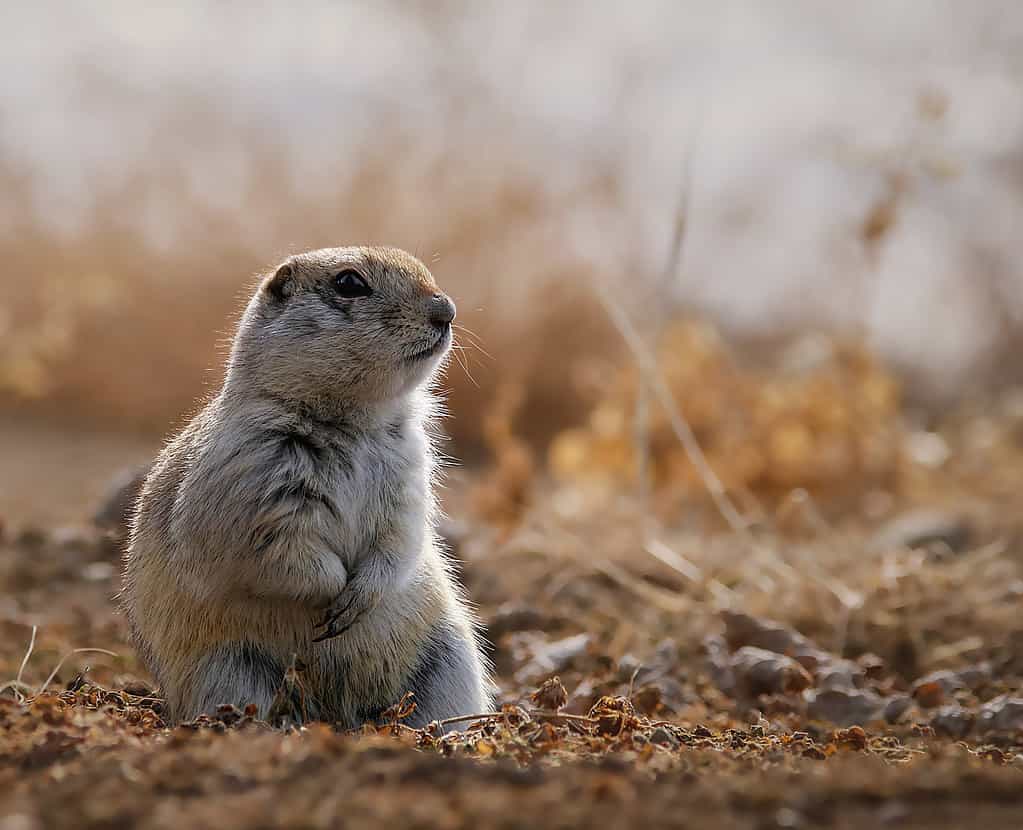
Ground squirrels are very similar to prairie dogs in the way they stand up on their hind legs to survey for prey.
©Ryguyryguy74/Shutterstock.com
Don’t be fooled by their name, ground squirrels are not cute little animals with bushy tails. They are related to animals such as chipmunks and prairie dogs. As illustrated in their name, ground squirrels are adept diggers who create a vast tunnel system.
They often live in groups that stay in the burrows during the day. As for food, ground squirrels eat a lot of seeds and berries, as well as any small insects and lizards that they can find.
3. Antelope
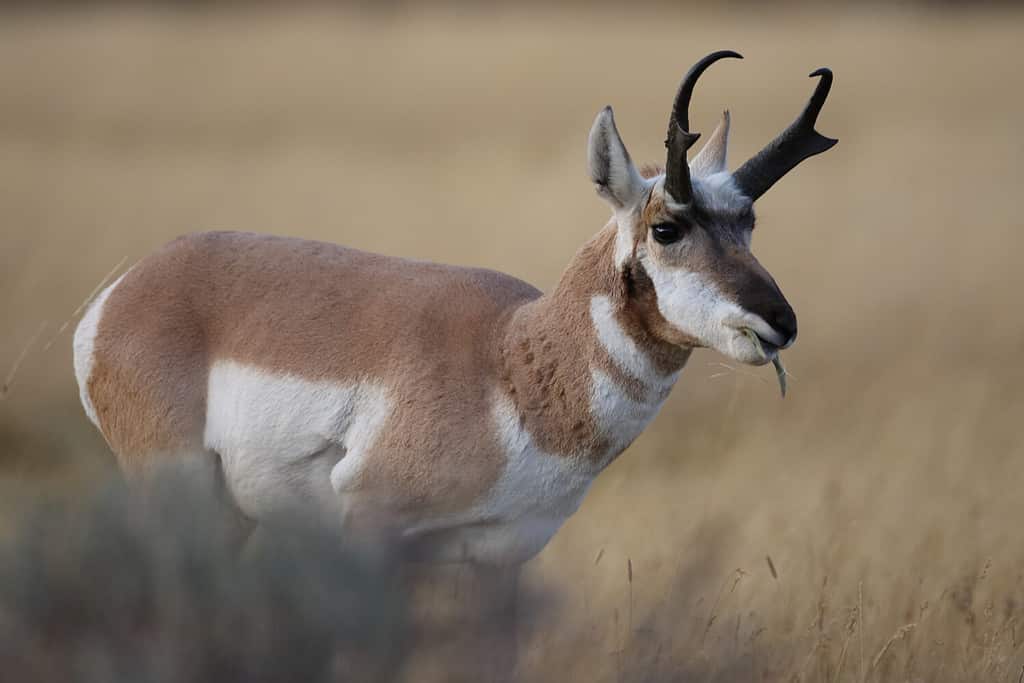
All pronghorn
antelope
have some form of antlers. Females’ antlers can often be so small, however, that they are covered up by fur.
©Greens and Blues/Shutterstock.com
The Black Rock Desert is also home to larger animals, such as the pronghorn antelope. These creatures are not actually antelope at all, even though they are commonly referred to as just “antelope.”
They have small horns, which are usually more defined on the males. Traveling in groups, these antelope travel between sagebrush locations where they can graze, while also keeping an eye out for larger predators that may be after them.
4. Badgers
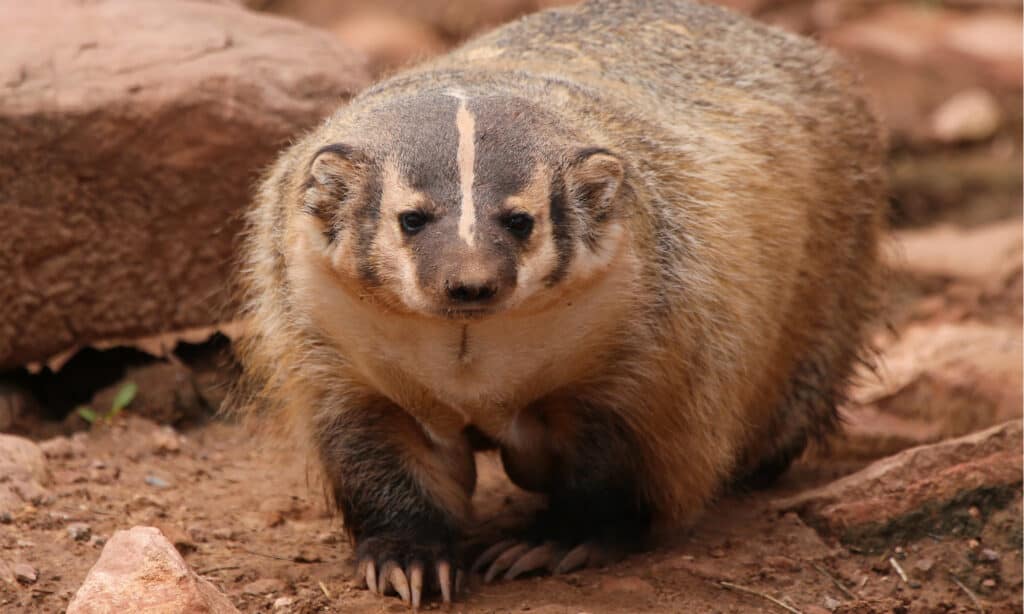
Badgers have characteristic stripes that run across the top of their heads.
©Steve Boice/Shutterstock.com
Being members of the weasel family, badgers are one of the most loved animals in the Black Rock Desert. They are incredibly great predators that can latch onto small prey. Like most of the small animals in the desert, they tend to burrow and live in the ground to stay protected from the heat of the day.
In addition to eating small animals, badgers can snack on berries, vegetation, roots, and other various plant foods.
5. Horned Lizards
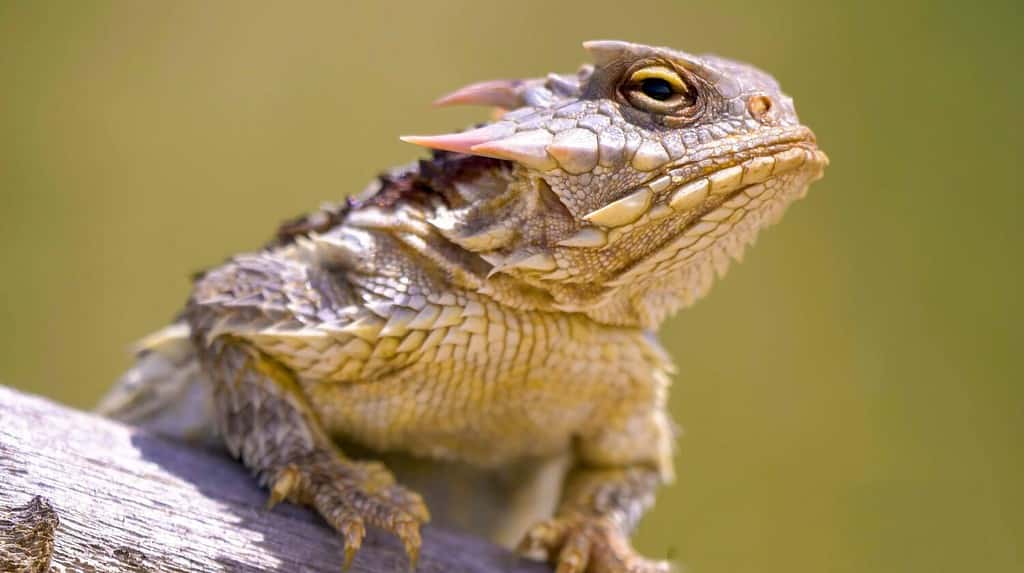
Horned lizards are some of the only animals that can bear the heat of the desert sun during the day.
©Swaroop Pixs/Shutterstock.com
Probably one of the most loved desert animals, the horned lizard is a common creature that you may see in the Black Rock Desert. Unlike other desert animals, lizards require the sun for energy, which means that you can often see them during the day.
Despite their appearance of looking like mini-dinosaurs, horned lizards rely on eating small insects to survive.
6. Mule Deer
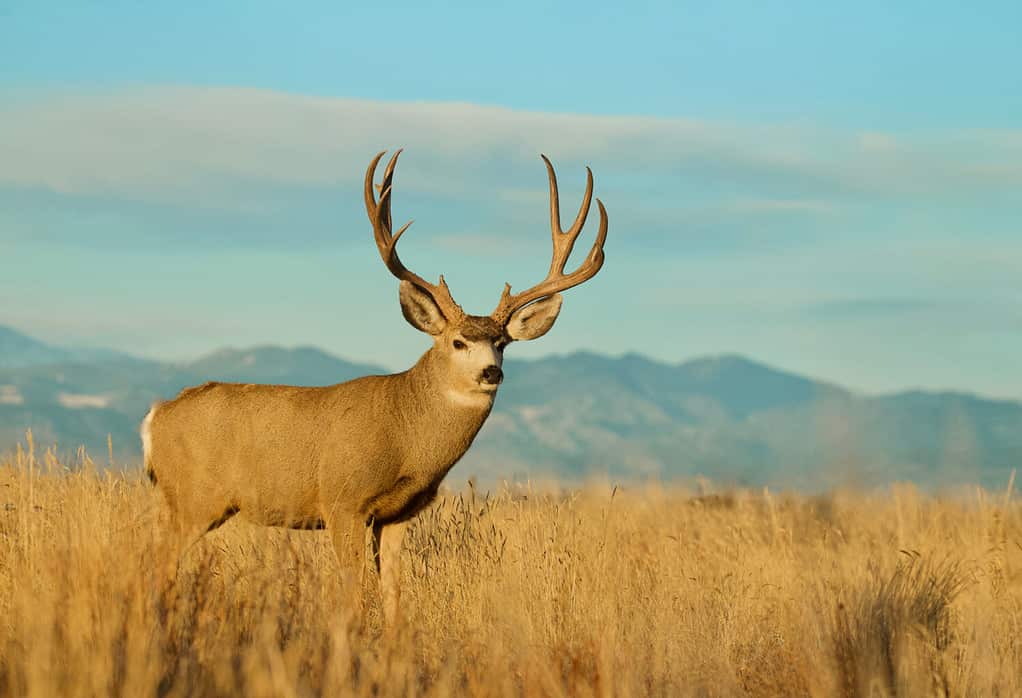
Being prey to larger hunters, mule deer are extremely fast runners, and can reach speeds of up to 45 miles per hour!
©Tom Reichner/Shutterstock.com
Another large animal that lives in the Black Rock Desert is the mule deer. Similar to the antelope, mule deer tend to travel in groups around pockets of sagebrush in search of food. They are nocturnal; however, it is not uncommon for people to see them lounging during the day due to their conspicuous size.
7. Aquatic Microbes and bacteria
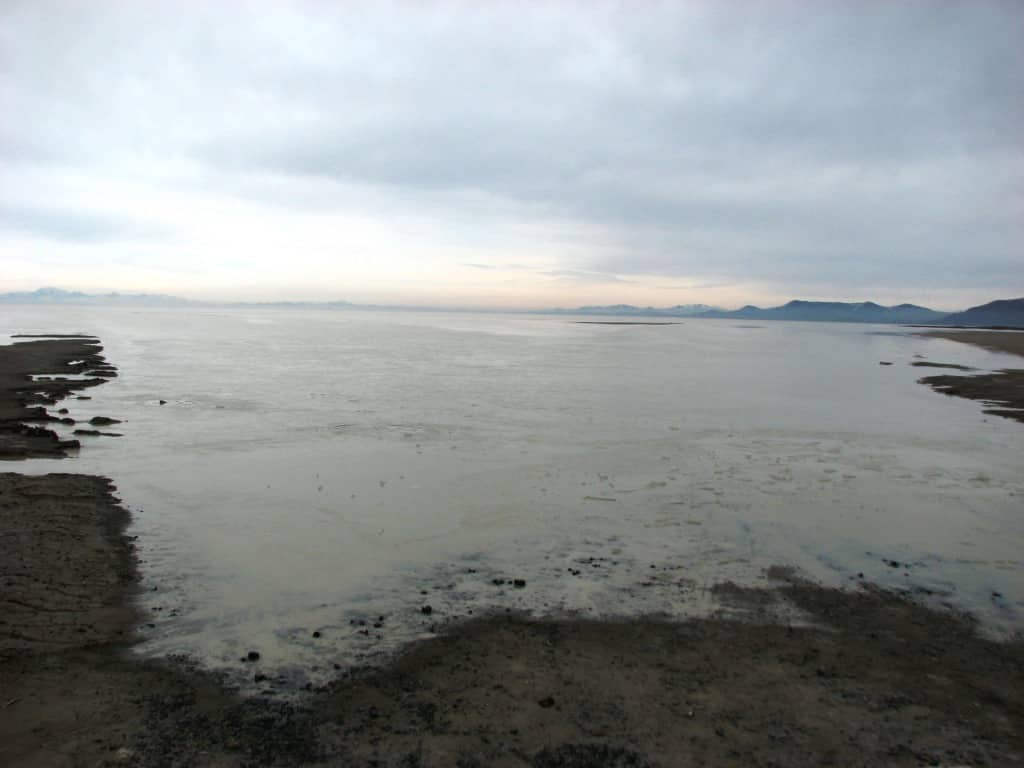
Despite being a desert, the Black Rock Desert can get some pretty intense rain storms, especially during the winter months.
As previously described, water can collect on the playa during times of immense rain. It is not uncommon for aquatic microbes and bacteria to be found in the water. Interestingly enough, it is thought that these bacteria can lie dormant within the soil between rain storms, able to survive the heat of the desert without water for months! Although these aren’t any animals that you can see, they are sure a unique group that you should know about.
8. Insects
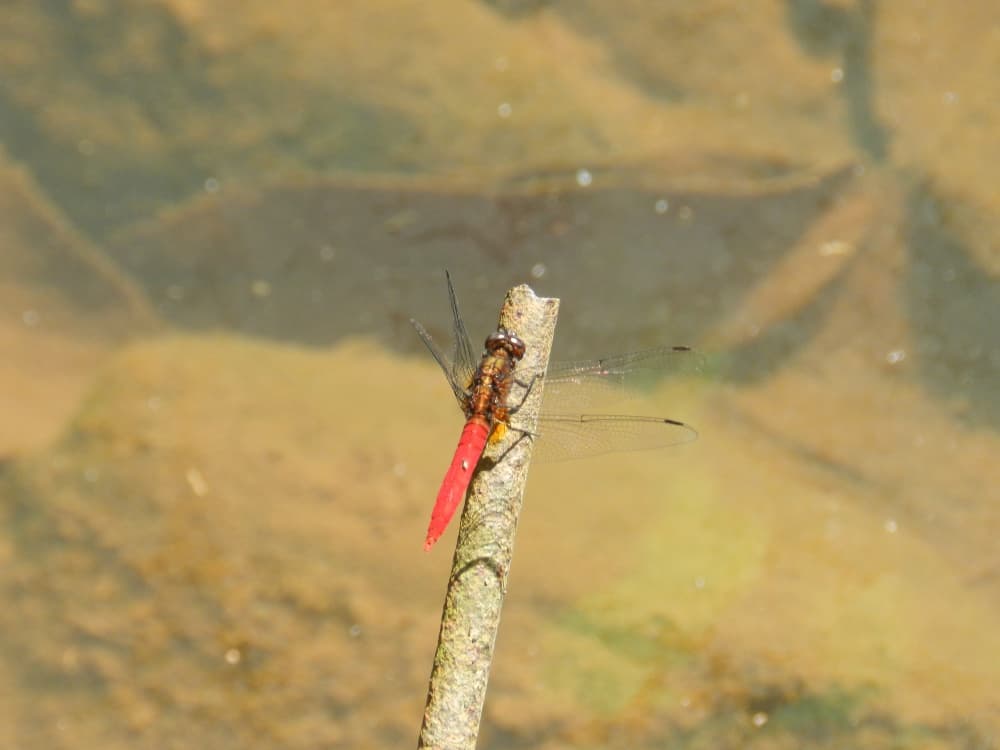
Dragonflies and other insects are commonly seen in the desert, even during the daytime!
©Millie Bond – Copyright A-Z Animals
Insects are some of the most abundant animals that you can find in the desert. Due to their small body size, they can survive on a very small amount of vegetation or nectar. This means that they can grow very large populations with very few available resources.
Common insects include worms, dragonflies, wasps, butterflies, and more. You are likely to see something fly by if you go to the desert, so keep your eyes peeled!
9. Small Aquatic Creatures During Rainy Seasons
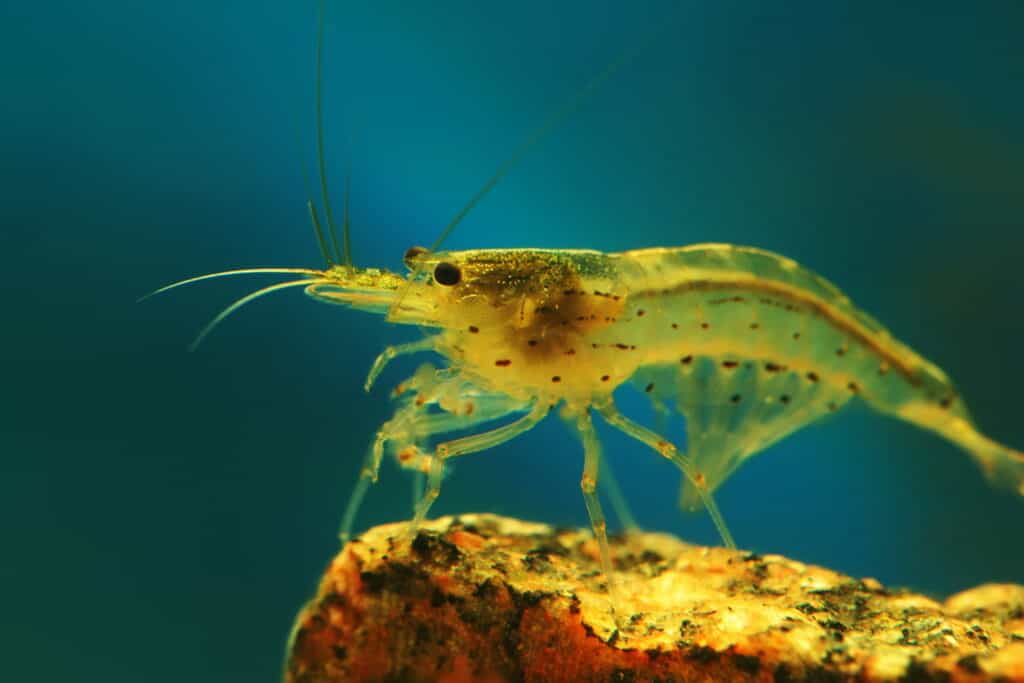
Shrimp eggs have a cycle of dormancy that allows them to stay alive in bone-dry soil. Likewise, when they come in contact with water, they can hatch to start a new population.
©Grigorev Mikhail/Shutterstock.com
Last but not least, the desert is also home to small aquatic creatures when the rain collects in the playa. Similar to how bacteria are able to stay dormant in the soil, there are a few crustacean species that can lay eggs that last in the soil.
More specifically, shrimp species such as fairy shrimp and tadpole shrimp are the most common crustaceans that you can see during certain times of the year.
Summary of 9 Amazing Animals Lurking in Burning Man’s Black Rock Desert
| Animal | |
|---|---|
| 1. | Kit Foxes |
| 2. | Ground Squirrels |
| 3. | Antelope |
| 4. | Badgers |
| 5. | Horned Lizards |
| 6. | Mule Deer |
| 7. | Aquatic Microbes and Bacteria |
| 8. | Insects |
| 9. | Small Aquatic Crustaceans |
The photo featured at the top of this post is © JULIA Culp/Shutterstock.com
Thank you for reading! Have some feedback for us? Contact the AZ Animals editorial team.





